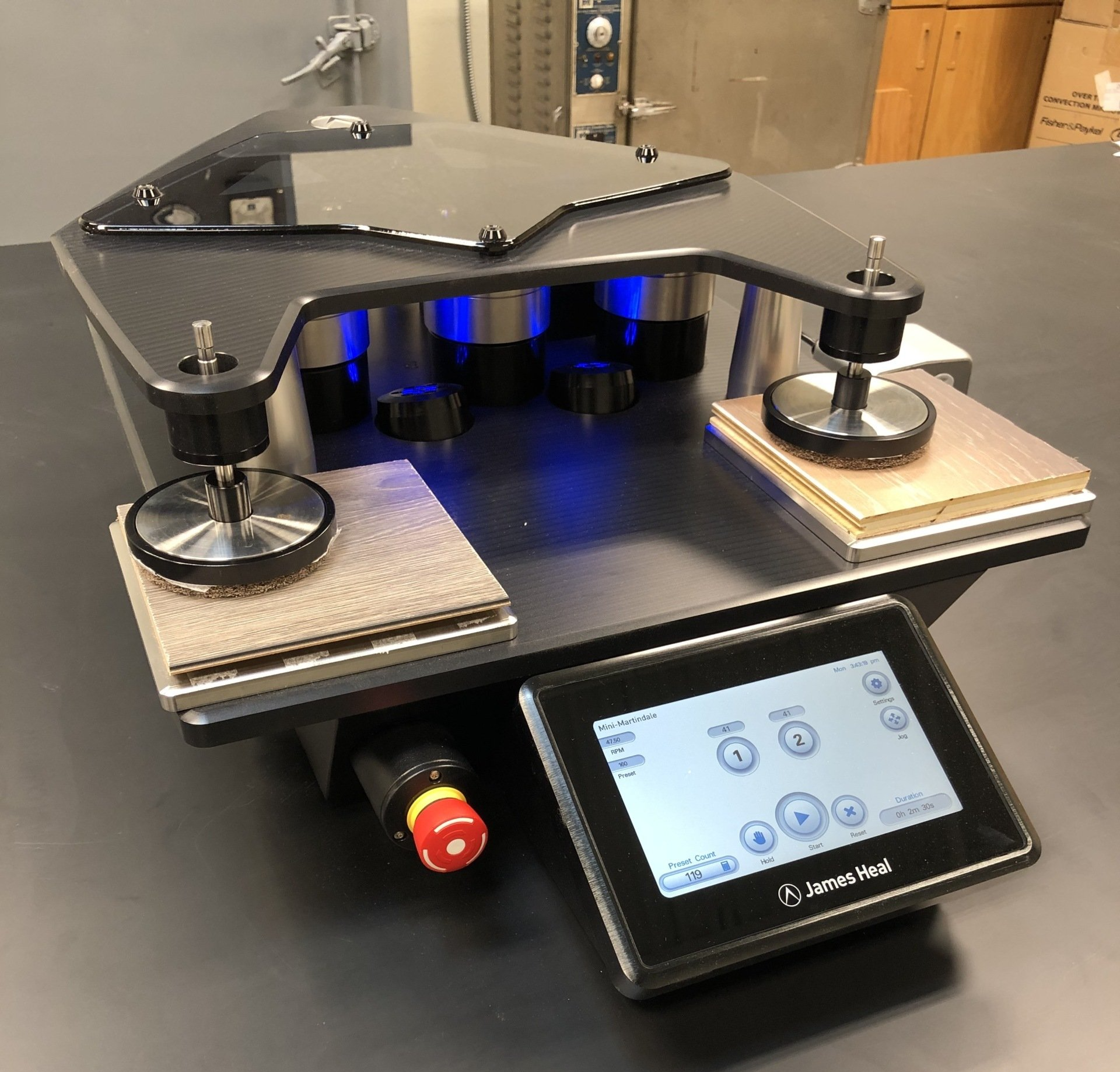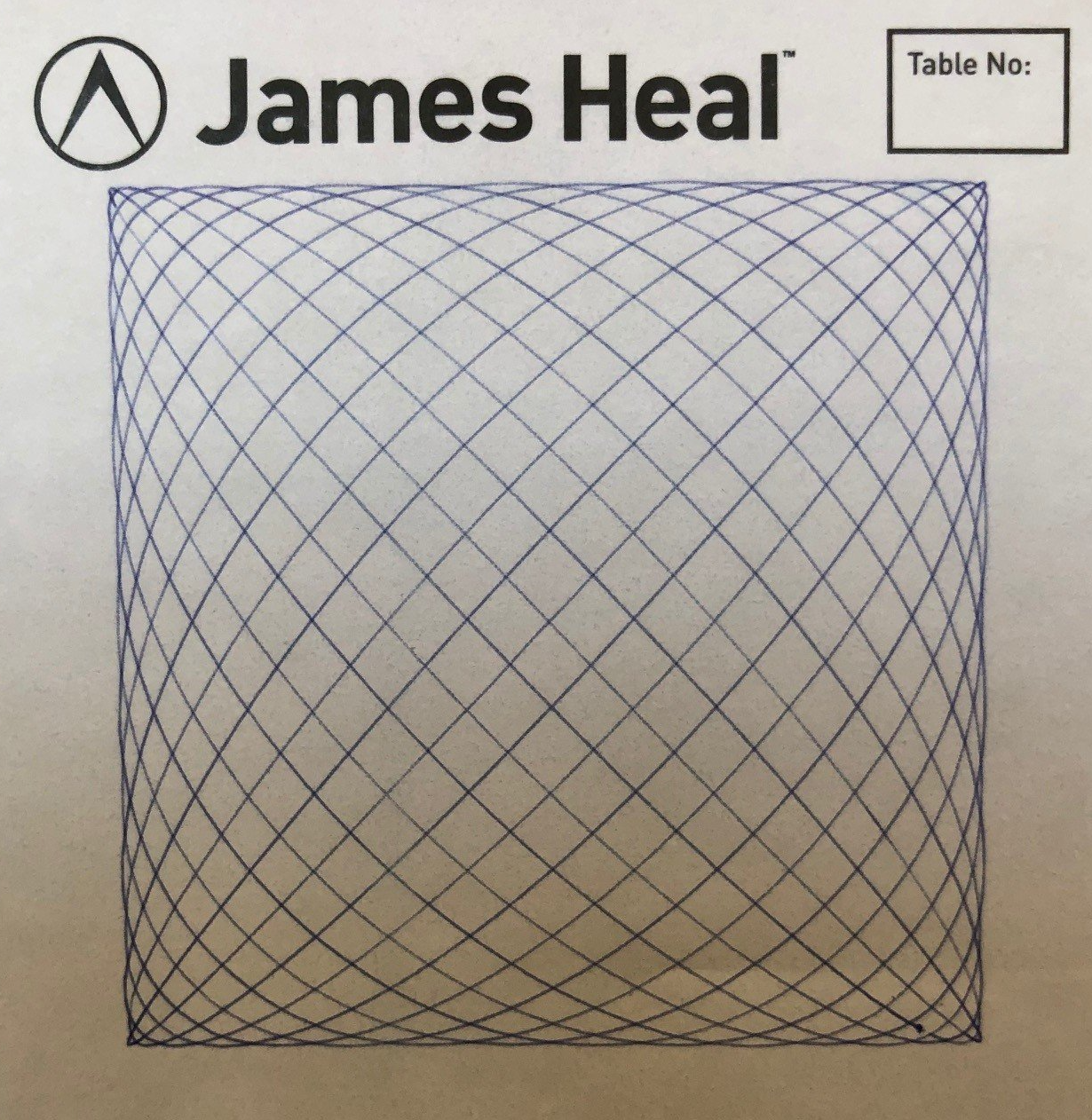EN 16094
mARTINDALE MICRO-SCRATCH TESTING
lAMINATE FLOOR COVERINGS
REQUEST A QUOTE
EN 16094 Martindale Micro-Scratch Testing
Method for Determination of Micro-Scratch Resistance
Which materials should to be tested in accordance with EN 16094?
- Engineered Wood Flooring
- Laminate Flooring
- Resilient Flooring (LVT, LVP, SPC, etc.)
How is EN 16094 testing performed?
The EN 16094 Martindale test is composed of two procedures: Procedure A and Procedure B. Three 5.9” x 5.9” (150 mm by 150 mm) specimens are tested in each procedure. These specimens must be conditioned for seven days in an environment that has a temperature of (23 ± 2) °C and (50 ± 5) %RH prior to testing.
Procedure A evaluates a product’s resistance to change in gloss level, while Procedure B evaluates a product’s resistance to visible surface scratching. Together, these results provide a complete picture of a product’s micro-scratch resistance performance.
Procedure A
Before testing, all specimens are wiped down with a cotton cloth. Using a gloss meter with a geometry of 60°, four measurements are taken per specimen. The specimens are then placed on the Martindale machine testing plates and secured. Next, a "very fine" scrub material and 612g (6N) weight are loaded onto the guide plates. A cycle of 80 rubs is selected and the test is conducted. After testing, each specimen is wiped down with a cotton cloth and gloss measurements are taken again at the same initial locations. The change in gloss is calculated and the specimen is given a class rating between MSR-A1 (≤10% gloss change) to MSR-A5 (>70% gloss change). The ratings for all three specimens are then averaged and rounded up to the next classification rating.
Procedure B
Before testing, all specimens are wiped down with a cotton cloth. Specimens are then secured to the Martindale machine testing plates. The "medium fine" scrub material and 413g (4N) weight are loaded onto the guide plates, a cycle of 160 rubs is selected, and the test is conducted. After testing, each specimen is wiped down with a cotton cloth and conditioned for at least 24 hours at (23 ± 2) °C and (50 ± 5) %RH. Specimens are then visual inspected and given an overall class rating based on visual inspection under a light source providing a 6500K color temperature and 1200 lx illumination. Class ratings are based on sample scratch diagrams provided in the standard, and range from MSR-B1 (no visible scratches) to MSR-B5 (great many scratches). The ratings for all three specimens are then averaged and rounded up to the next classification rating.
What data will be included in an EN 16094 report?
- Gloss Change Classification Rating (MSR-A)
- Scratch Resistance Classification Rating (MSR-B)
- Initial and Final Gloss Level
- Average Gloss Change
EN 16094 Test Specimen Preparation
One test requires six specimens that are each 5.9-inches by 5.9-inches (150mm x 150mm). The specimens must be substantially flat. If the flooring product's width is smaller than 5.9-inches, specimens shall be composed of two parts with the length joint in the middle.
Did you know?
The Martindale abrasion machine was invented by Dr. J.G. Martindale in the 1940's while working for the Wool Industries Research Association. The machine was originally designed to aid the WWII war effort by testing the wear properties of carbon-impregnated cloth intended to protect English soldiers from a gas attack. Today, the machine is still used extensively in the textiles industry to evaluate the abrasion and pilling resistance of fabrics.



